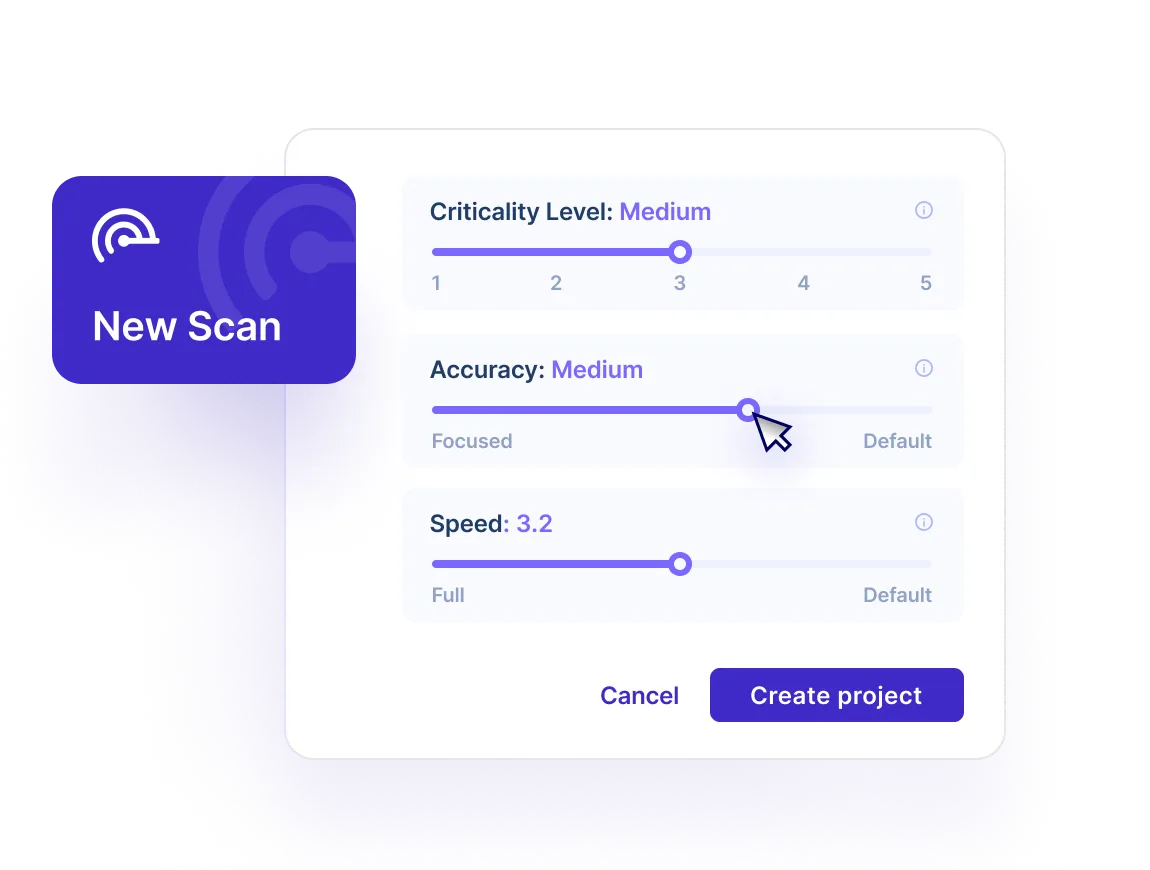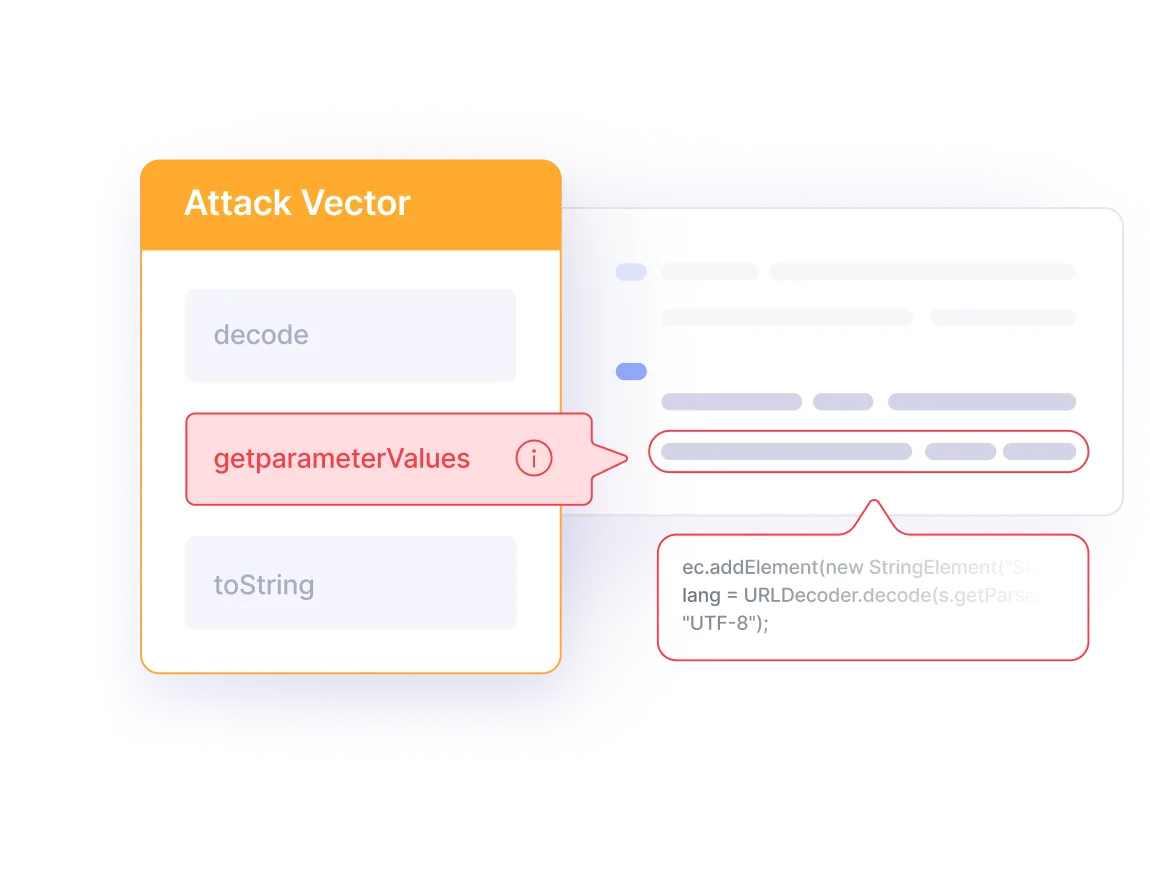Benefits
Checkmarx SAST vs. Coverity
For teams currently using Black Duck Software’s (formerly Synopsys) Coverity Scan searching for a Coverity alternative solution to boost security, Checkmarx SAST excels where Coverity falls short. From easier deployment and configuration, to simplified integration with modern CI/CD tools, to support for continuous scanning, Checkmarx delivers the capabilities teams need to manage security in complex, fast-moving environments.
AI Query Builder For SAST
Checkmarx SAST offers unmatched flexibility to adapt to your application’s criticality. Now, with our AI Query Builder, fine-tune scans with ease, reduce false positives/negatives by 90%, and uncover a wider range of vulnerabilities – all without writing complex queries.
Checkmarx SAST vs. Coverity: Where Checkmarx stands out
Simple deployment and configuration
With a flexible deployment model, Checkmarx makes it quick and simple to get SAST scanning up and running in any environment. Checkmarx also offers an intuitive framework for writing custom scanning rules, making it easy for developers to tailor tests to their applications and risk tolerance levels.
In addition, Coverity’s complicated configuration process means that it takes significant time and effort to get the product up and running.

With a flexible deployment model, Checkmarx makes it quick and simple to get SAST scanning up and running in any environment. Checkmarx also offers an intuitive framework for writing custom scanning rules, making it easy for developers to tailor tests to their applications and risk tolerance levels.
In addition, Coverity’s complicated configuration process means that it takes significant time and effort to get the product up and running.
Continuous scanning
Security vulnerabilities don’t take breaks, and your scanning solution shouldn’t, either.
Checkmarx supports ongoing scanning, allowing you to detect security problems whenever they appear. Coverity relies on a more incremental approach that doesn’t always guarantee real-time visibility into security issues.

Security vulnerabilities don’t take breaks, and your scanning solution shouldn’t, either.
Checkmarx supports ongoing scanning, allowing you to detect security problems whenever they appear. Coverity relies on a more incremental approach that doesn’t always guarantee real-time visibility into security issues.
Keeping up with modern development
Today’s software development pipelines are highly dynamic environments where new code is constantly entering. Thanks to tight CI/CD integrations and continuous scanning, Checkmarx operates at the speed of modern development. Coverity’s limited integrations, makes the tool feel much less like a modern solution. It might have worked in the days of waterfall, but it doesn’t keep pace in a DevOps-centric world.
Today’s software development pipelines are highly dynamic environments where new code is constantly entering. Thanks to tight CI/CD integrations and continuous scanning, Checkmarx operates at the speed of modern development. Coverity’s limited integrations, makes the tool feel much less like a modern solution. It might have worked in the days of waterfall, but it doesn’t keep pace in a DevOps-centric world.
Fast time-to-value
In Checkmarx, you can add source repositories to scan and integrate with CI/CD tools in just a few clicks. You also get automated remediation guidance for IaC and SAST, helping you to make and implement plans for fixing security issues rapidly. The result is less time configuring your SAST product or interpreting scan results, and more time finding and fixing security risks.
By comparison, Coverity’s complex configuration engine and limited selection of CI/CD integrations leave developers less time to focus on what matters – delivering secure code. Coverity also lacks automated remediation guidance, making it harder for developers to figure out how to mitigate security flaws in their code.

In Checkmarx, you can add source repositories to scan and integrate with CI/CD tools in just a few clicks. You also get automated remediation guidance for IaC and SAST, helping you to make and implement plans for fixing security issues rapidly. The result is less time configuring your SAST product or interpreting scan results, and more time finding and fixing security risks.
By comparison, Coverity’s complex configuration engine and limited selection of CI/CD integrations leave developers less time to focus on what matters – delivering secure code. Coverity also lacks automated remediation guidance, making it harder for developers to figure out how to mitigate security flaws in their code.
See it in action
Discover why Checkmarx One is a better alternative
Speak to an expert to explore how Checkmarx meets your critical application security needs.
Securing the applications driving our world